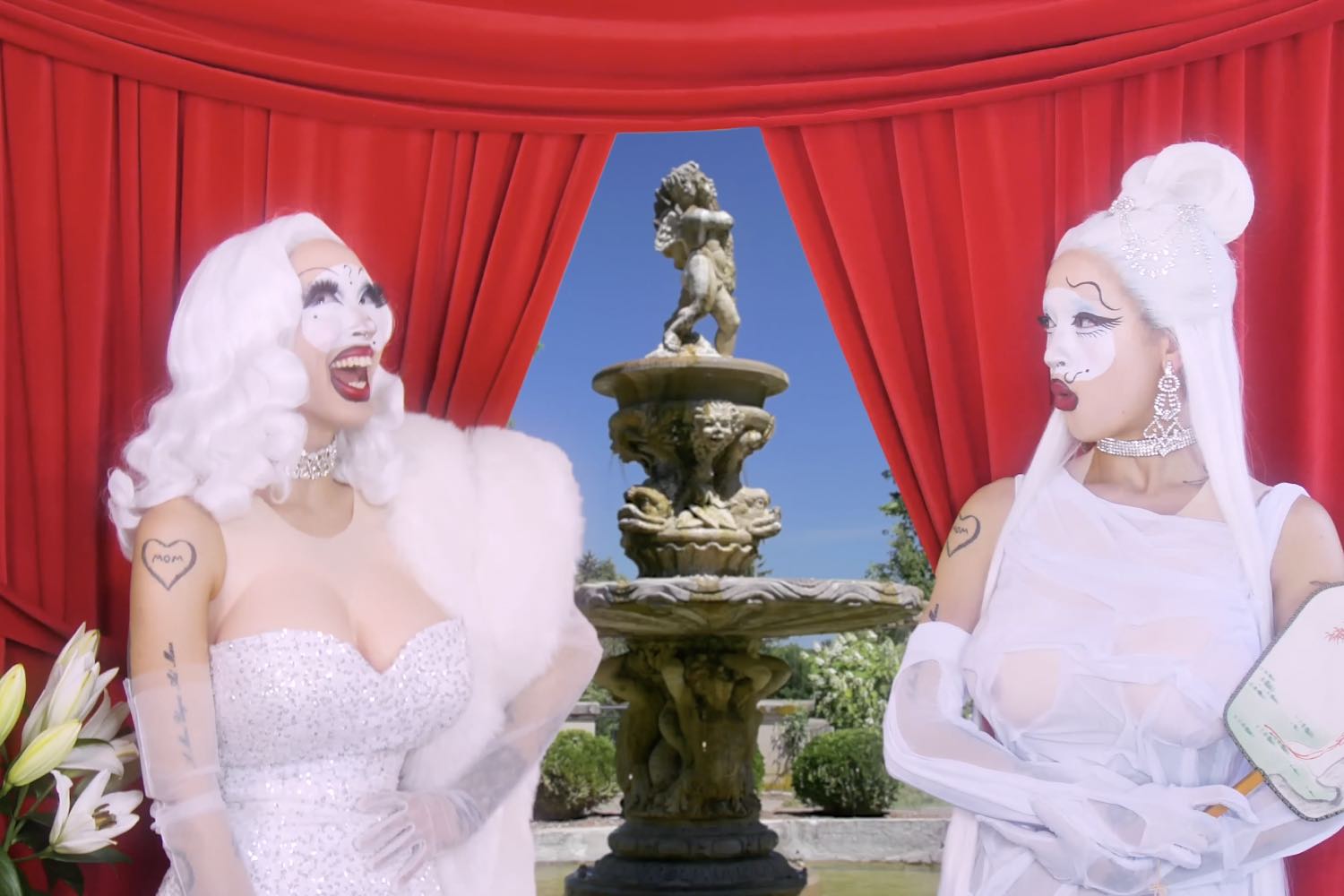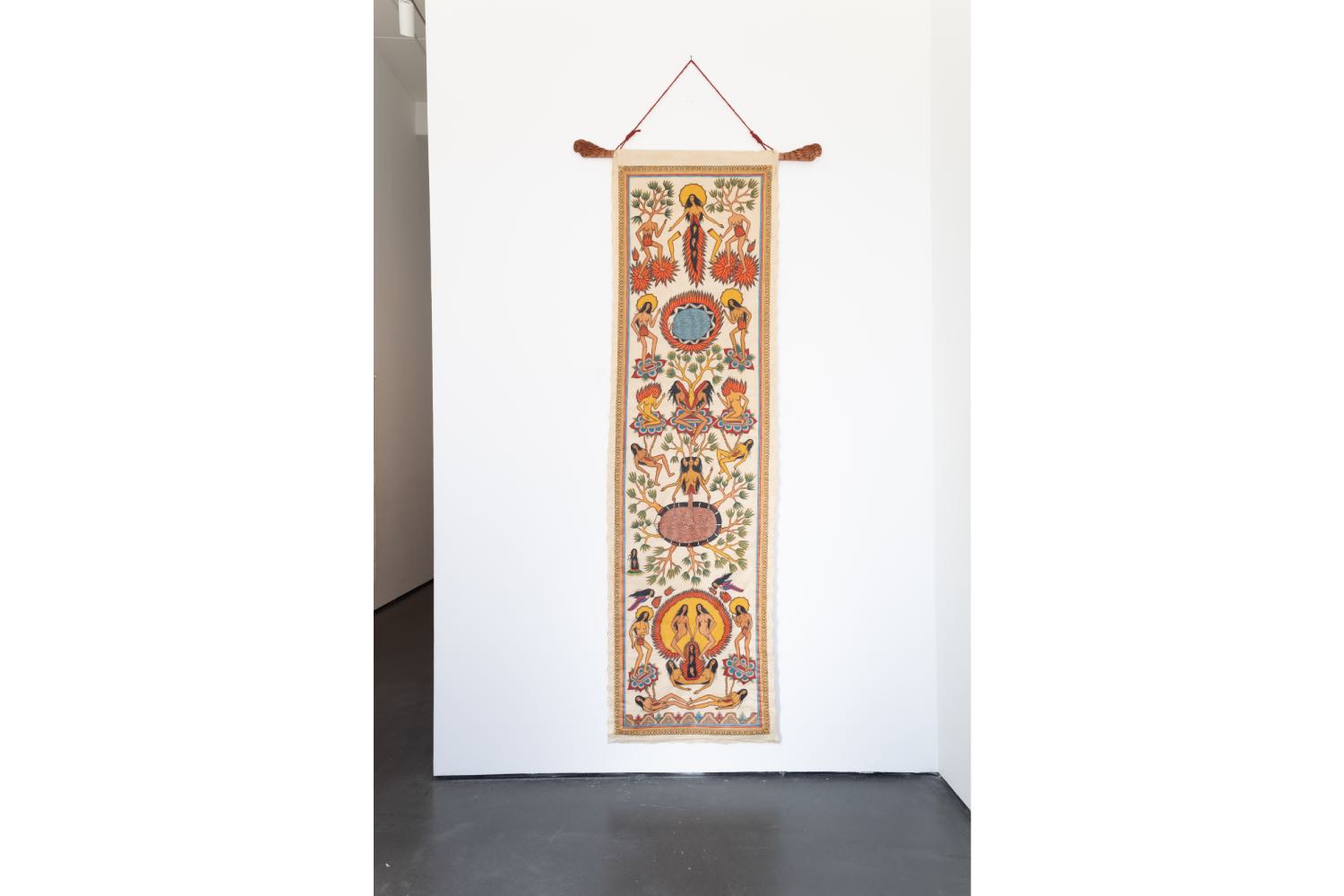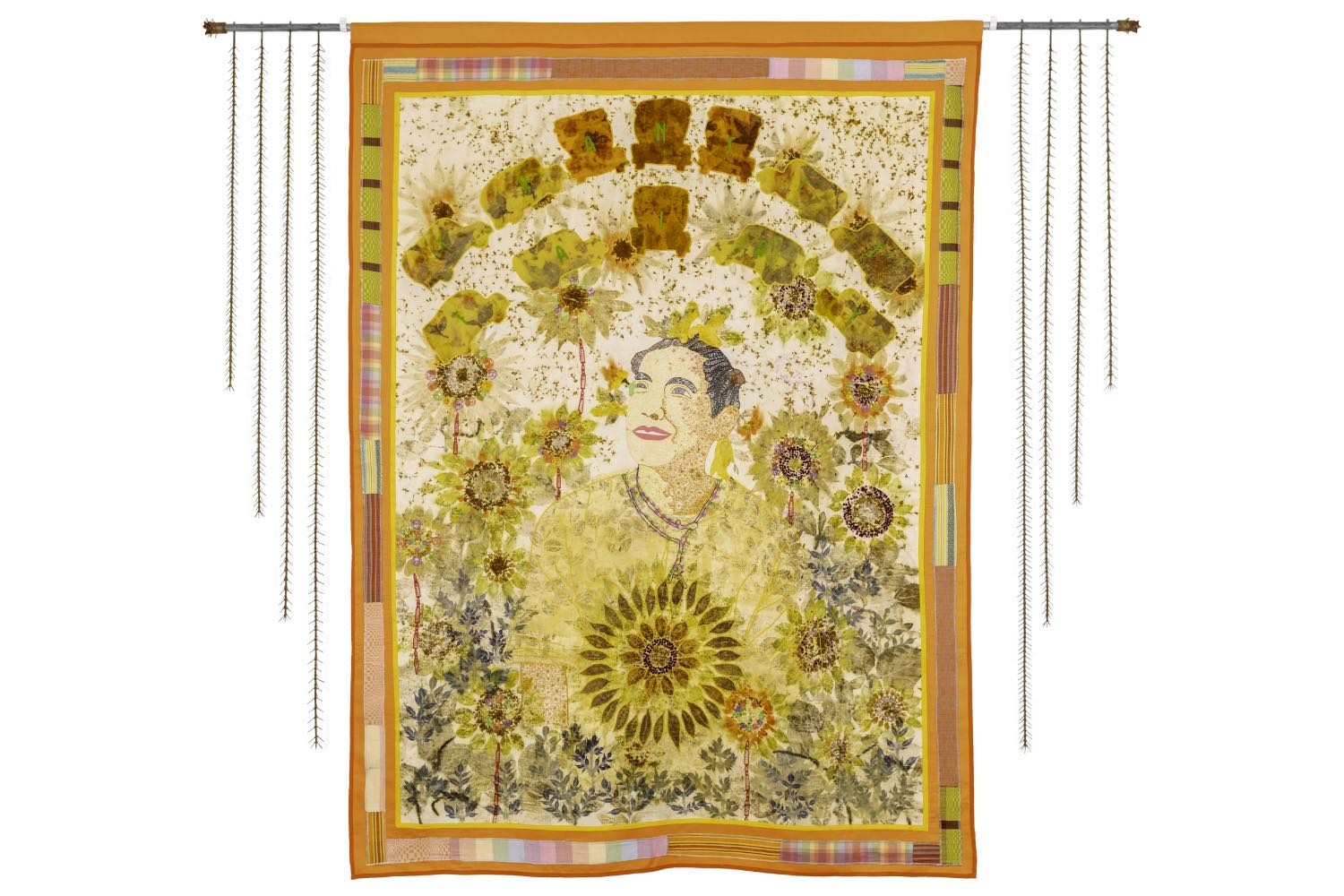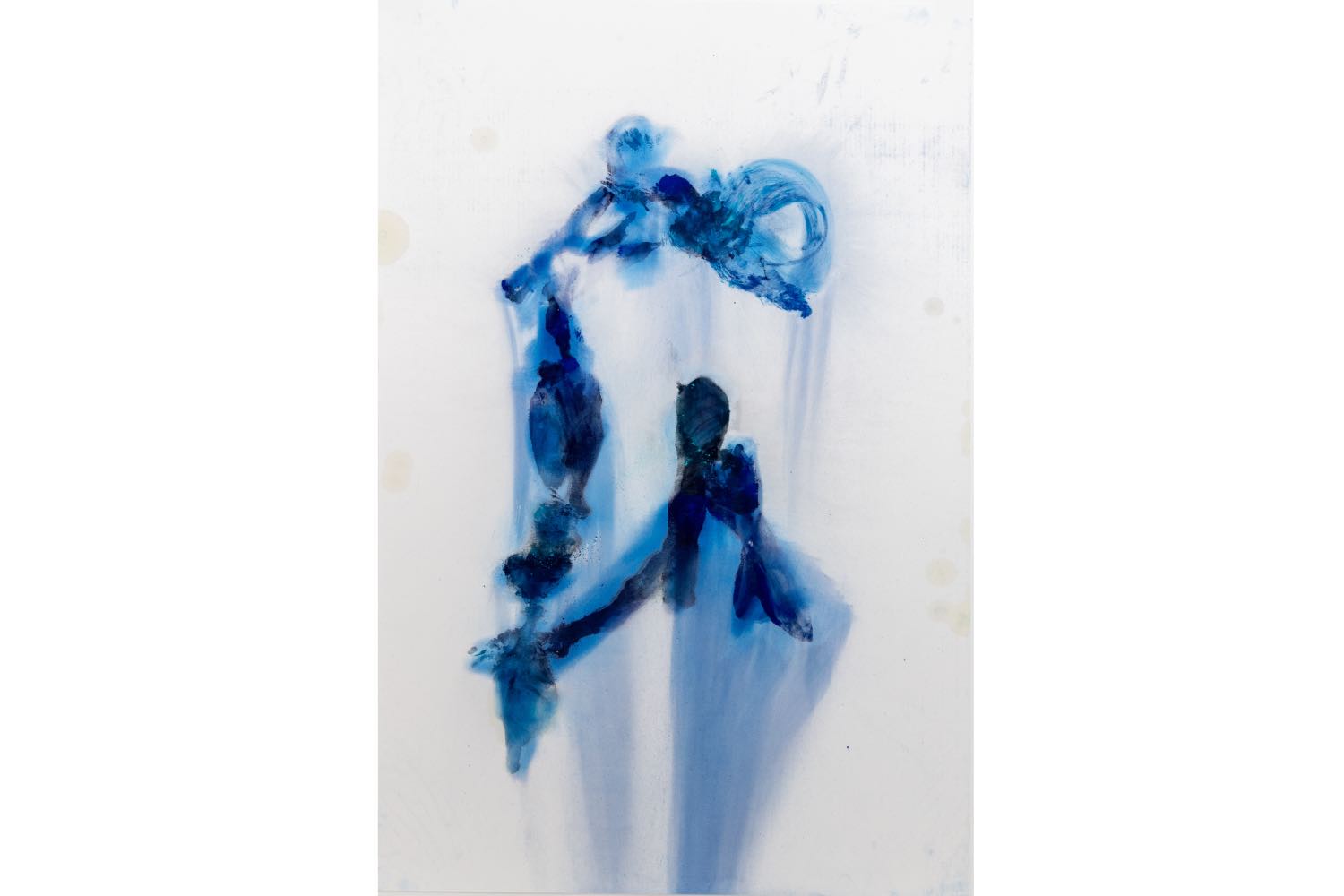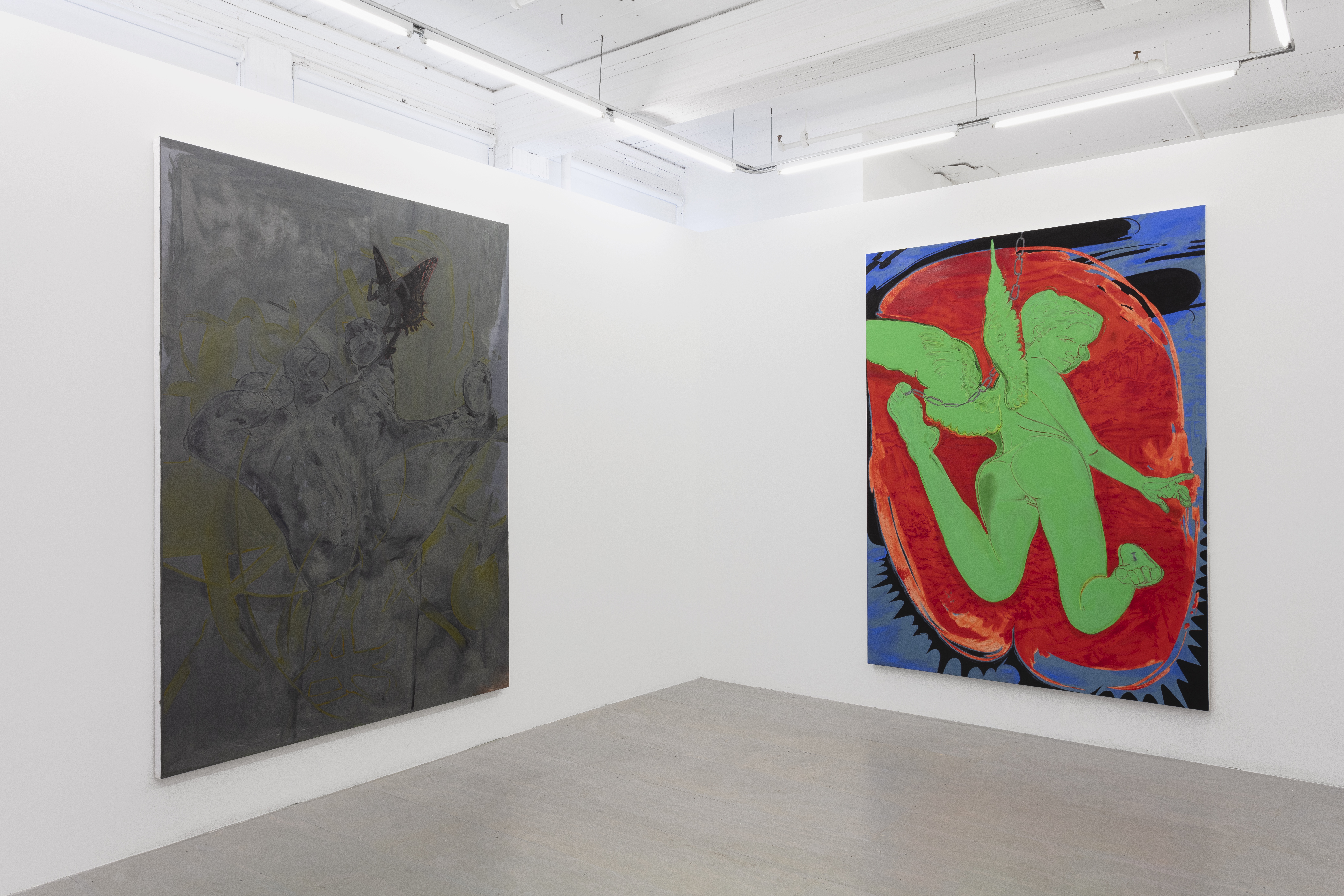“Soft Fantasy / Hard Reality,” is Silverlens New York’s current summer group show, curated by gallery co-founder Isa Lorenzo – a careful exercise in evoking non-identitarian forms of togetherness and relatedness.
One focus of Lorenzo’s curatorial decision-making is to reveal unthought alliance between artists previously segregated by geographies or disciplines. Geraldine Javier’s Amerika (2024) opens the exhibition. For Amerika, and its sister spike-flanked tapestry Pilipinas (2024), Javier appropriates a propogandist painting commissioned by kleptocrat Ferdinand Marcos, who cast himself and his wife Imelda as Malakas and Maganda, the masculine and feminine figures of Tagalog creation-myth comparable to Adam and Eve, and transforms said imagery into portraits of Pauline Van Senus, a self-proclaimed transit fairy who volunteered to beautify Seattle bus stops during the pandemic, and Patricia Non, who initiated a network of community pantries providing free goods to neighborhoods in the Philippines. Populist and reactionary symbols of nation-state and cult of personality become endearing celebration of socially engaged women. Javier’s interest in social practice is also evident in her methodology of eco-printing, where she employs local populations to farm flora for her natural dye tapestries. Grievances against past political violence can be worked through in present movements of solidarity.
Next to Amerika is a work from Tosh Basco’s blue body drawings series (all untitled and made in 2023) which also focuses on the social context in which aesthetic production takes place. Compared to Javier’s work, Basco’s untitled drawing, subtly queering minimalism’s masculinist sensibility, resolutely gestures toward a kind of image (re)production radically enclosed within the corporeal self and its electric immediacy.
Both Javier and Basco experiment with decoupling and coupling. The former envisions ways in which ecological imagination could be untethered from the neocolonial relation between the United States and Philippines for tales of intimacy and care. The latter collapses referent and means of production onto each other in the realm of bodily imaginary.
Evocations of gender and sexuality and their constitution as a mere drag are abundant in the exhibition. In Sin Wai Kin’s Irreconcilable Differences (2020), against a virtual background devoid of cultural specificity, two of the artist’s drag characters (both stereotypes of Western and Eastern femininity from an imagined time and place) dismissively exchange their lack of mutuality in a choreography of non-verbal misrecognition. In the absence of language, physical gestures are blown up to signifiers of difference. Close-ups of delicate hands holding an ornamented oriental accessory, or its occidental counterpart, possibly suggest geopolitical tensions. The status of gendered performance as political speech far from natural is further restaged and confirmed by the neighboring video The Storyteller (2023) in which Sin, in drag as a cyborgian news presenter in a futuristic metropolis, stares at spectators unemotively instead of carrying on the program. Chinese characters at the bottom of the screen declare end of the world.
Themes of apocalyptic decay and consequently rebirth are similarly manifested in Yasue Maetake’s sculptures arranged from industrial waste and animal remains. Symbolic Atmosphere VI (2020) embodies such hybrid materiality intensely. Its uncanny resemblance to both organic forms and spiritual artifacts speaks to intentions of repairing the manufactured separation of nature and culture in a posthuman world.
Beyond environmental concerns, reparative gestures for feminist and queer relationality dominate the main gallery. Diminishing distinctions between public infrastructure and private desire, Eisa Jocson enacts a set of choreographic movements borrowed from pole dance in Stainless Borders: Deconstructing Architectures of Control (2010) under a low-resolution digital camera. Sites that signify normativity, legality and border such as flagpole and signpost are transmuted into extensions of bodily apparatuses by Jocson’s subdued performances that showcase her physical prowess and endurance. Similarly, Ming Wong’s installation Bloody Marys—Song of the South Seas (2018–24) repeats a singular performance of the Tonkinese character Bloody Mary from South Pacific (1958). Wong’s camp rendition of Bloody Mary’s plea for assimilation through romance with a U.S. Marine lieutenant, frenetically overlayed with YouTube clips of performances by actors of different races from amateur productions and original performances by Juanita Hall, a black actress, flattens the film’s fetishizing racial politics. Assuming Bloody Mary’s ambiguously coded body, Wong queers a politically impotent woman under the gaze of white savior.
In “Soft Fantasy / Hard Reality,” new fictions and historical archives often blend into each other, revealing the unstable ground of social structure. The exhibition’s curatorial affinity toward ambivalence hints that neither physical struggle nor intermedial intervention can afford a liberatory practice, awaiting retrieval in the incessant gaps between overflowing fantasy and fixtured reality.

